Day Trip to Newcastle
Famous for football, friendly faces and fun nights out, there’s something in Newcastle for everyone. You’ll also find a wealth of museums, culture and food and drink hotspots. We’ve put together a handy guide on what you can do when you visit the home of the Geordies, and the best way to get there. We’ll get you sorted faster than you can say ‘whey aye, man!’
Getting There
Newcastle is situated on the East Coast Mainline between London and Edinburgh, so it’s easy to get to. You’ve plenty of choice as well, with some routes having multiple operators to choose from. Here’s what you can expect from a selection of key destinations:
- London – From London, LNER operate twice per hour, and Lumo run several times per day. If you’re travelling in a group or with a lot of luggage, LNER is your best bet, as they have quite a few more table seats. They have a lot more luggage space as well! Travelling alone, as a couple or just travelling light? Lumo is a great choice for the budget-conscious. Their trains run non-stop from London or Stevenage to Newcastle, too
- Edinburgh is served by LNER and Lumo, too. You can also choose from CrossCountry and TransPennine Express. If you want a quieter train, TransPennine Express can be a good bet. This is because most of their trains to Scotland start and finish in Newcastle, so you can the have first pick of seats. York also has trains operated by LNER, CrossCountry and TransPennine Express
- If you’re coming from places such as Carlisle and Middlesbrough, then you’ll catch a Northern train. Look out for last-minute deals on ‘Advance’ tickets! They often sell them right up to departure of the train, so you could still save compared to buying a more flexible ticket.
The Main Sights – the City Centre
Newcastle Cathedral
First of all, let’s take a look at a few of the main sights. If you take a left turn out of the station and continue for a couple of blocks, you’ll reach Newcastle Cathedral, also known as The Cathedral Church of St. Nicholas. St Nicholas is the patron saint of sailors and boats, which makes sense considering how important the River Tyne was, and continues to be for the city.
The current building was completed in 1350 and was heavily restored in 1777. It’s open every day (free entry) between 8am and 6pm, so you can pop in and take a look for yourself!

Newcastle Castle
Now, if you walk just a little further, you’ll find Newcastle’s Castle Keep and the Black Gate. This does answer the obvious question of whether Newcastle literally does have a castle! There’s been a castle here since Roman times, but this one dates from around 1177. From the 1500s to the 1700s, parts of the castle were used as a prison, and there were even some private houses within its grounds.
Nowadays, you can visit both of the attractions, which form part of Newcastle Castle. At the time of writing (February 2023) it’s open from Thursday to Sunday, and an adult ticket costs £9.95.
If you’re interested in tracing the history of Newcastle as a fortress, you could also search for parts of the old town walls. You’ll find a fairly complete section of the West Wall near Stowell Street, situated on the edge of Chinatown. It’s just a short walk from other City Centre attractions.

Grey Street
Heading back to the Cathedral, you can continue onwards a little to Grey Street. It’s undoubtedly one of the most beautiful streets you’ll find in a British city, and it was even rated the best street in the UK by Radio 4 listeners in 2010!
It was designed and built by Richard Grainger in the 1830s, and houses a variety of bars and restaurants. Most famously though, you’ll find the Theatre Royal at the very top.
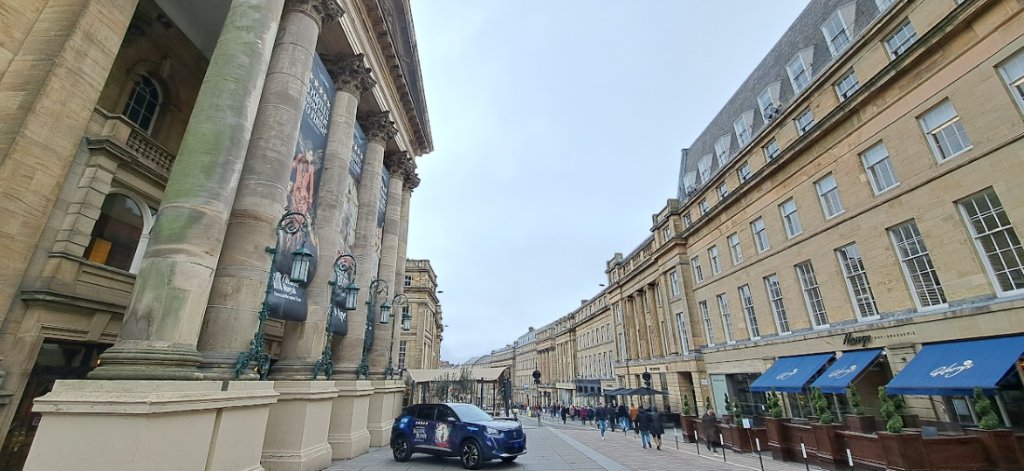
Grey’s Monument
This brings us nicely to the last main sight on our whistle-stop tour, which is Grey’s Monument. It was built in 1838 to commemorate Charles Earl Grey’s work in passing the Great Reform Act of 1832, which increased the number of people able to vote in elections.
Nowadays, the Monument is the focal point of Newcastle. It functions as a Speakers Corner and plays host to events, performances, protests and more all year round. No matter the day of the week, there’ll probably be something gannin’ on!

Museums & Art Galleries
Newcastle is full of them! Most importantly, there’s a great deal of free ones, which is what we’re going to focus on. In the City Centre itself, you’ll find three attractions worth popping into…
The Great North Museum
Previously known as the Hancock Museum, the Great North Museum focuses on a mixture of natural history and the teaching of other world cultures.
You can learn about the wildlife of Newcastle and the wider region, and what makes it so special. Don’t miss the replica of a T-Rex either, we’ve checked and it doesn’t bite!
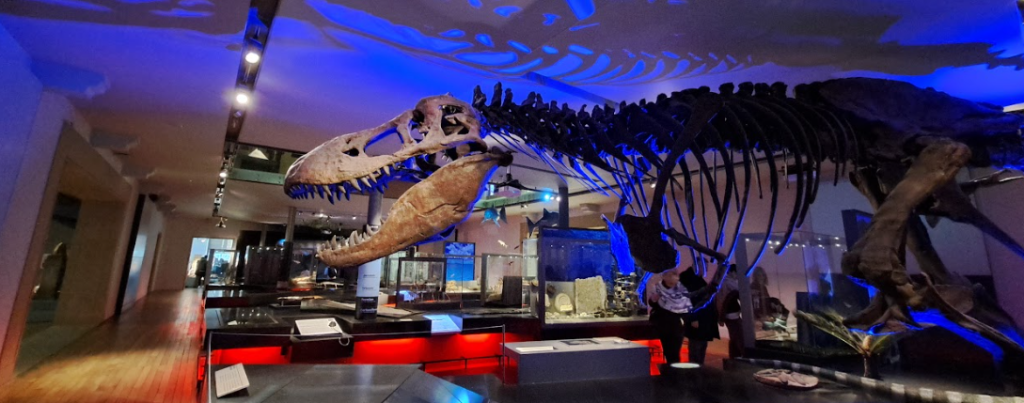
If you’re coming to the museum with your little ones, there’s a dedicated Mouse House to bring the rest of the exhibitions to life.
At the moment, it’s open between 10 and 5 every day. To reach the museum, you can walk to it or take the Tyne & Wear Metro from the station to Haymarket (two stops, five minutes).
You can find out more on the museum website.
The Discovery Museum
If you’d like to know more about the recent history of Newcastle, then the Discovery Museum is right up your alley. Located on St James’ Boulevard (turn left out of the station and continue straight on for around five minutes), it contains a variety of exhibitions about Newcastle, the river and its industry.
The centrepiece of the museum is the Turbinia, which was the world’s first Steamship, built in 1894. At the time, it was easily the fastest ship in the world, too. The ship itself was built in Wallsend, which is just a short distance down the river from Newcastle. Up until 2006, Wallsend was building ships that sailed to every corner of the world. A look at this list of ships built by one company there shows you just how powerful this small Tyneside town once was!
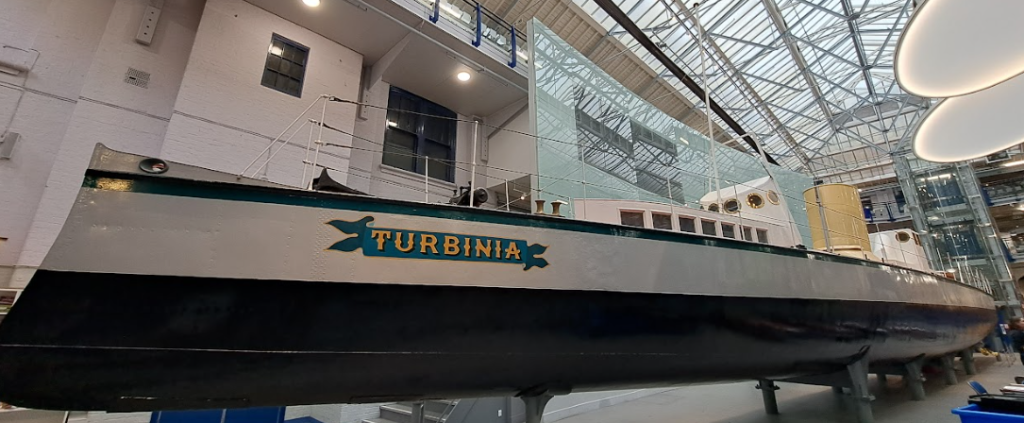
The Newcastle Story exhibition will take you through the history of the city from the Roman era to the present day, with all of the fascinating changes that came with it. Another feature is Destination Tyneside, which is the only permanent exhibition in the UK which tells the story of migrants who’ve made Newcastle and the wider region their home.
Of course, there’s something for the kids as well. The interactive Science Maze brings science and engineering to life. Whether that’s through exploring shadows and illusions, or having a go at a game of air hockey!
Right now, you can visit the Discovery Museum every day between 10 and 4 (11 and 4 weekends, closed Bank Holidays). You can find out more about everything on offer on the museum’s website.
The Laing Art Gallery
When you think of a traditional art gallery, something like the Laing Art Gallery will come to mind. The funds to build the gallery were left by Alexander Laing, so that it could be founded in 1901. He didn’t actually leave any art to it, but said that “by the liberality of the inhabitants [of Newcastle] it would soon be supplied with pictures and statuary for the encouragement and development of British Art.”
Sure enough, he was right! You’ll find a wealth of work by artists local and not-so-local. Artefacts from Newcastle and photography collections of the local area in times past have also featured before.
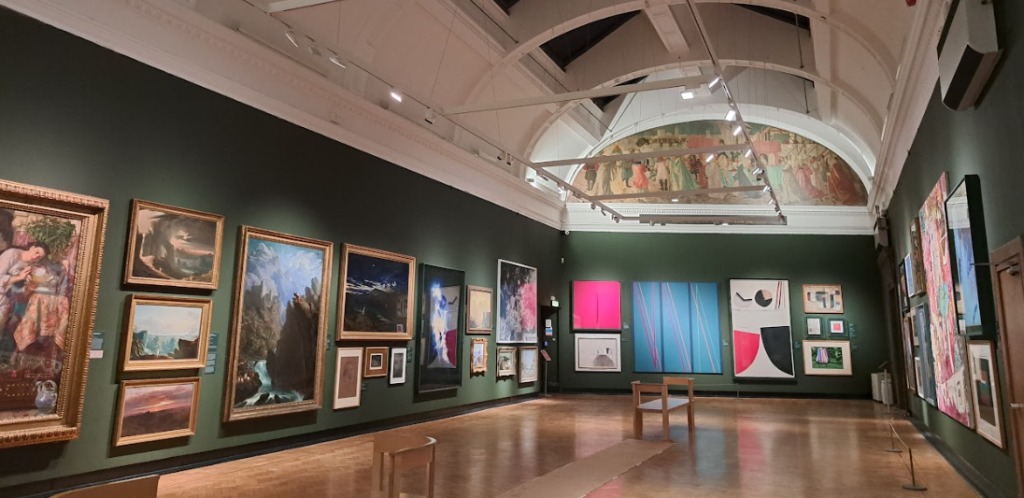
You can find out more about the gallery’s collection on their website. While most exhibitions are free, there might be a small charge for temporary ones. It’s open from 10 til 4:30 Monday to Saturday, and it’s located just off New Bridge Street – just a stone’s throw from Grey’s Monument and the rest of the City Centre.
The Quayside
The Quayside and the River Tyne have always been the lifeblood of Newcastle. In times past, it was teeming with industry. But, as this declined, the Quayside underwent a complete transformation. Nowadays, it’s a centre for hospitality, art and culture and just generally a great place to have a wander. Even today, Geordies always have a special place for the Tyne in their hearts. As the famous song goes, the fog on the Tyne is aal mine, aal mine!
The Bridges
Newcastle is famous for its bridges. As the old joke goes, there’s only one place that has the same number of bridges – Gateshead, on the other side of the river!
On the Quayside itself, there’s four main bridges that you’ll see:
- The Millennium Bridge was opened in 2001. It’s the newest addition to the river and gives pedestrian and cycle access from one side to the other. The bridge formed part of the redevelopment of the Quayside and was designed to link new developments on each side (such as the Baltic, more on that below!) When something needs to get down the river, it’s able to tilt up in the air and let it pass, as well.
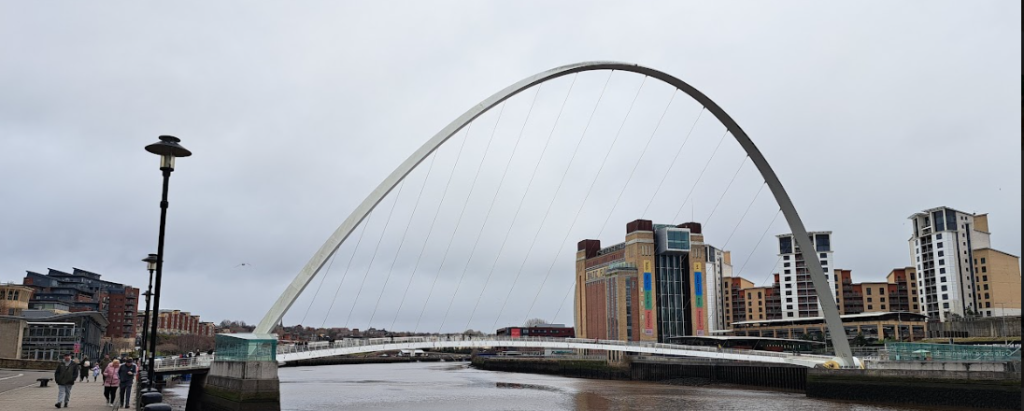
- The iconic Tyne Bridge is an unmistakable symbol of Tyneside. Linking commuters from north to south (and vice versa), many locals say they know they’re home when they go past those green arches. It was opened in 1928, and is also home to around 700 pairs of nesting Kittiwakes, which can make quite the racket when you walk under the bridge! They’re part and parcel of the River Tyne experience.
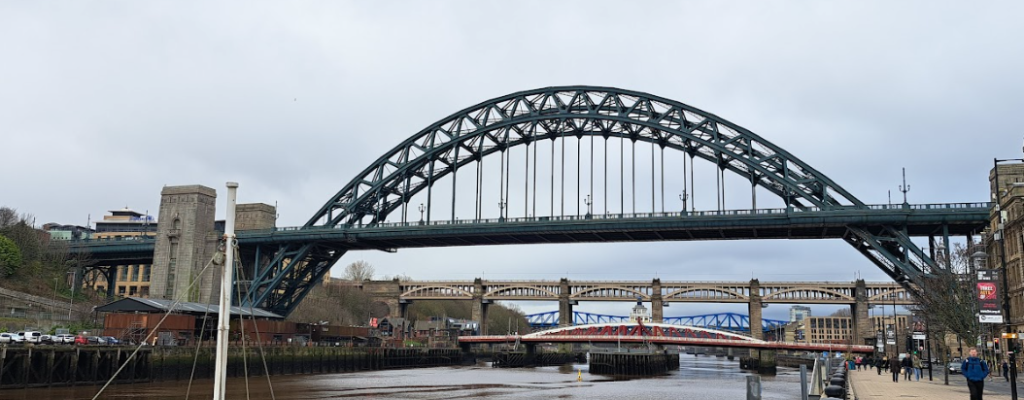
- The Swing Bridge does exactly what it says on the tin. It can swing on a pivot to let any river traffic through! While in theory this can happen, the decline of industry on the river means that it’s a rare occurrence these days. Back when it was opened in 1876, it was also the largest swing bridge in the world.
- Finally, we have the fascinating High Level Bridge. Built in 1849, it actually has two decks. The bottom deck (within the structure itself) is for buses and taxis, while the top deck (exposed to the elements!) is for trains. Usually the only trains that use the bridge are those between Newcastle and Middlesbrough. If you choose to have a walk along the bridge, look out for the many ‘love-locks’ next to the path!

The Baltic
If the art in the Laing Art Gallery isn’t quite for you, then you might enjoy what’s on offer in the Baltic. Originally a flour mill, it was converted to an art gallery in 2002. It’s located on the Gateshead side of the Quayside, right next to the Millennium Bridge.
It features guest exhibitions from a variety of artists around the world, who can choose to express themselves in an almost endless number of ways. Take a look at this exhibition by Hew Locke which was on display when we visited:
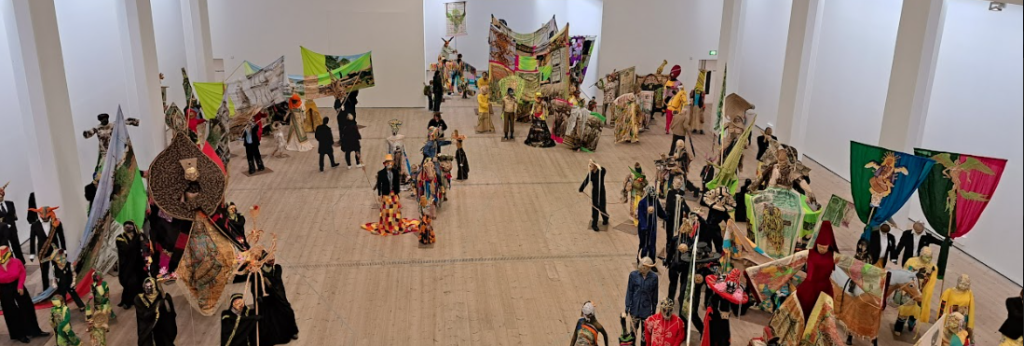
It might look a little ‘unusual’ at first, but it’s actually a look at ‘processions’ and how they form the cycle of life. You can find out more here. Above all, Baltic is about thinking ‘outside the box’.
If you’d like a view down the river, then head up to the fifth floor:

If the weather’s nice, you’ll also find an outdoor viewing terrace on the fourth floor. It’s also home to more nesting Kittiwakes, just like the ones under the Tyne Bridge!
The Baltic is open Wednesday to Sunday from 10 til 6 and entry is free.
The Sage Gateshead
As the name suggests, The Sage Gateshead is located on the south side of the river. Containing three performance halls, it was designed as a concert hall and musical education centre, opened in 2004. It’s also designed to be ‘acoustically perfect’, meaning that the different halls can be adapted to suit any kind of music.
If you’re not seeing a performance there, it’s still possible to have a wander inside. You’ll find a cafe and gift shop, as well as some pleasant views of the river. Just know that at the moment, the only way to access it from Newcastle is by walking over the Swing Bridge. Once you’re over the bridge, turn left and then cross the road to follow a path that leads up to the venue. Despite there being bus stops outside the Sage Gateshead, they’re no longer in use by any regular bus service.
The patch of land to the east of the venue will soon become the site of The Sage, which will be a brand-new arena. It’ll also house an international conference centre, bars, restaurants and hotels. The Gateshead side of the Quayside will truly become a hub for culture and the arts!

Eating and Drinking
Newcastle is a true melting pot of different cultures and cuisines, so it’s impossible to list them all. You can try local specialities and a famous stottie cake in the Grainger Market, while Chinatown has a plethora of restaurants serving traditional dishes from across Asia. Put simply, if you fancy it, somewhere will offer it!
The city also has a thriving craft beer scene. You’ll find little hidden bars like The Wobbly Duck in Old Eldon Square, which serve local specialities in a cosy and inviting atmosphere:
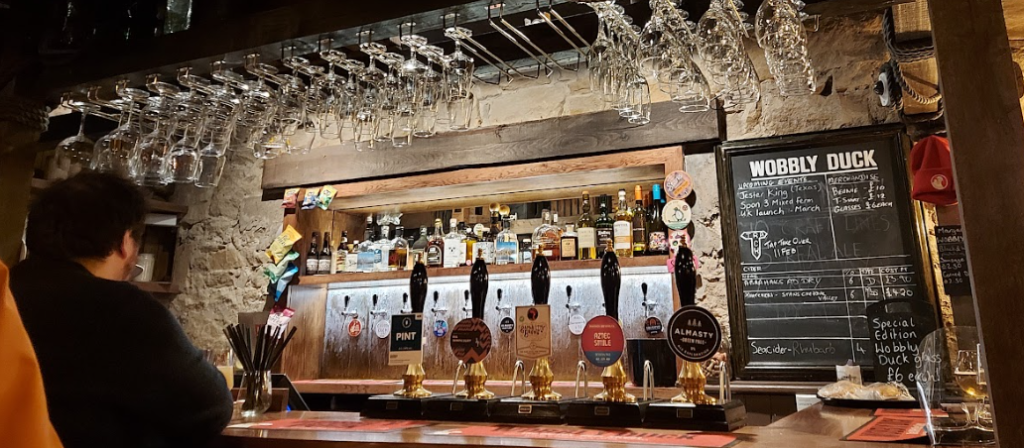
If you’re looking for somewhere near the station though, we have a couple of picks. For some tasty Mexican-inspired food, you could try Zapatista. They were Newcastle’s first Mexican-inspired burrito bar when they first opened over a decade ago.
Choose from burritos, nachos or chilli, with a wealth of options to make it your own. You can expect change from a tenner and a hearty meal to go with it. We tried the beef chilli:
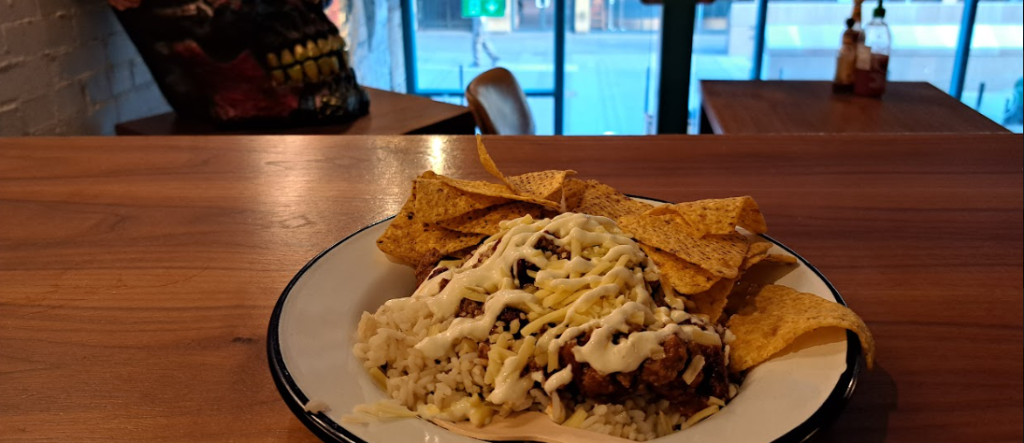
You can find Zapatista on Grainger Street, just two minutes from the station. Alternatively, there’s another branch on Ridley Place, in the north end of the City Centre.
If you’d prefer to fuse craft beer and fresh pizza together, look no further than the Newcastle Tap. It’s located just over the road from the station’s taxi rank and serves an ever-changing selection of local and world beers.
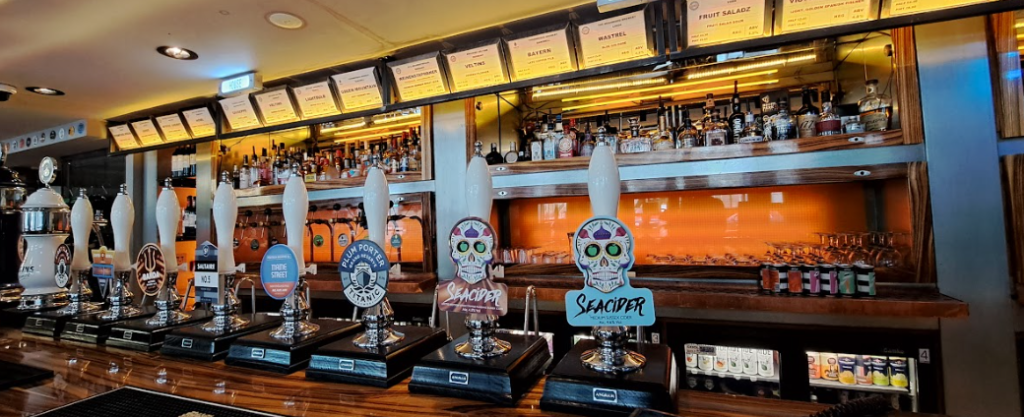
Along with the drinks, you’ll of course find the pizza. The Newcastle Tap has its own pizza oven and the option to ‘half and half’ your pizza if you can’t decide on just one type of topping! Pizzas start at around £9 and work their way up to £14-£15. You can click here to find out more.

Heading Further Afield
Of course, Newcastle is just a small flavour of what Tyneside has to offer. Here’s some of the other things that you could do in a day if you come to visit:
- Take the Tyne & Wear Metro to Tynemouth. Along with a stunning coastline, you can take a look at the ruins of the historic Priory and sample some classic Fish and Chips
- Jump on bus 21 to the Angel of the North. The largest sculpture of an angel in the world, it was completed in 1998 and designed by Antony Gormley. If you come by train from the south, you’ll catch a glimpse of it on the right hand side. But what could beat getting up close and personal to the 246 foot tall behemoth?
- You could also take the Metro to Wallsend to visit Segudunum Roman Fort. Did you know that Wallsend Metro Station is the only station in the world to have dual English and Latin signage?
However you choose to experience Newcastle, you can travel smarter with Railsmartr. Book tickets with us and you won’t pay any fees if you need to change your plans.